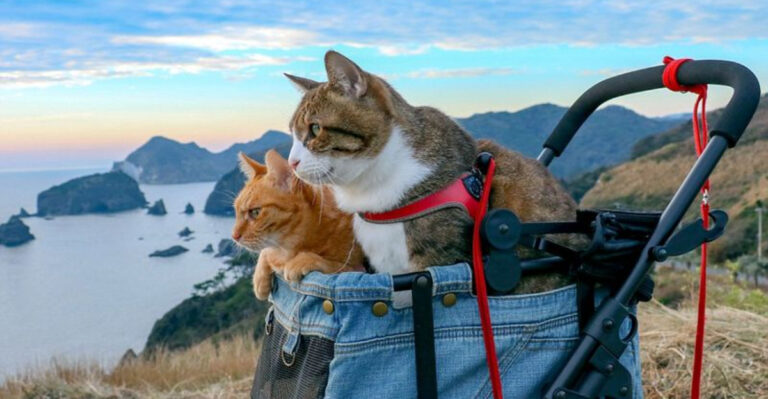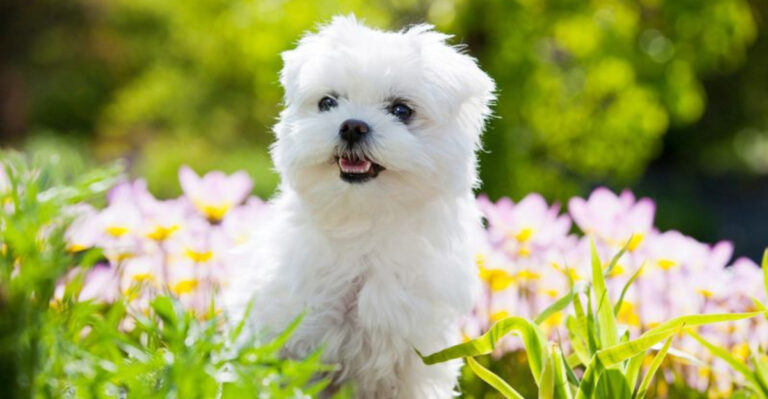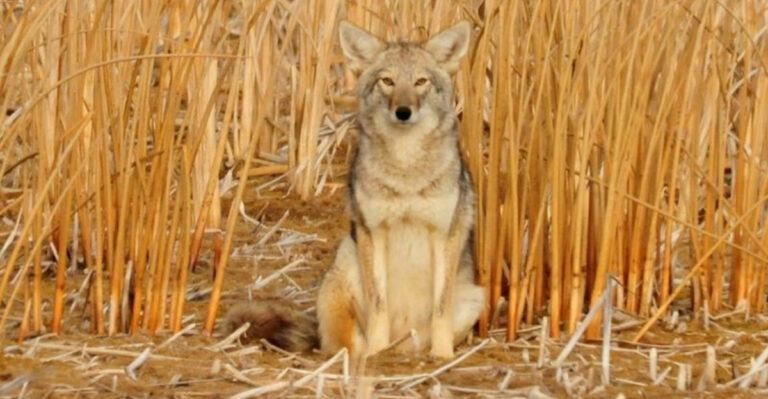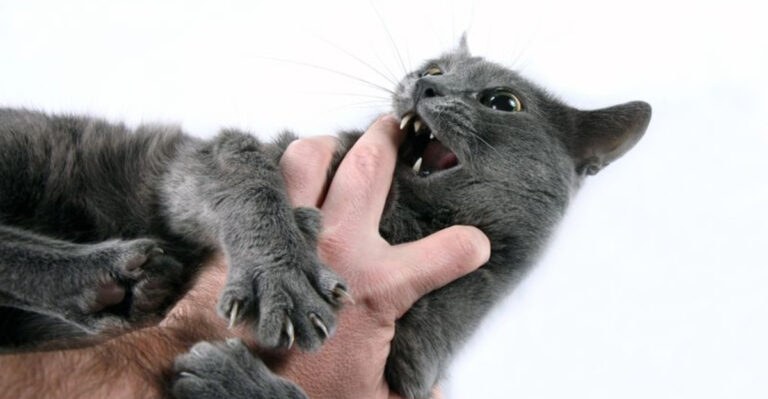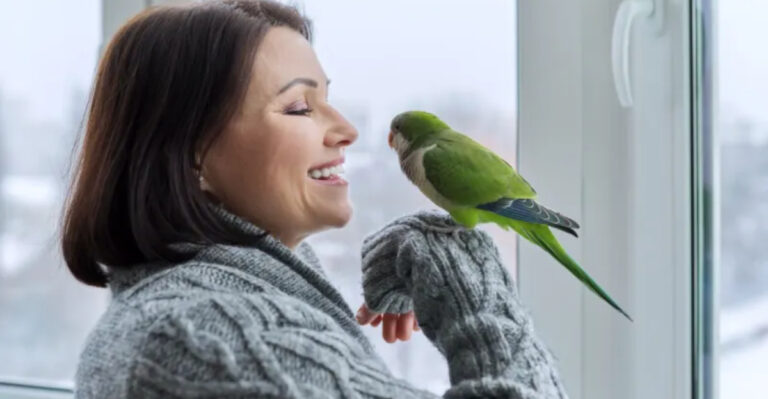20 Prettiest Birds Found Across The Globe
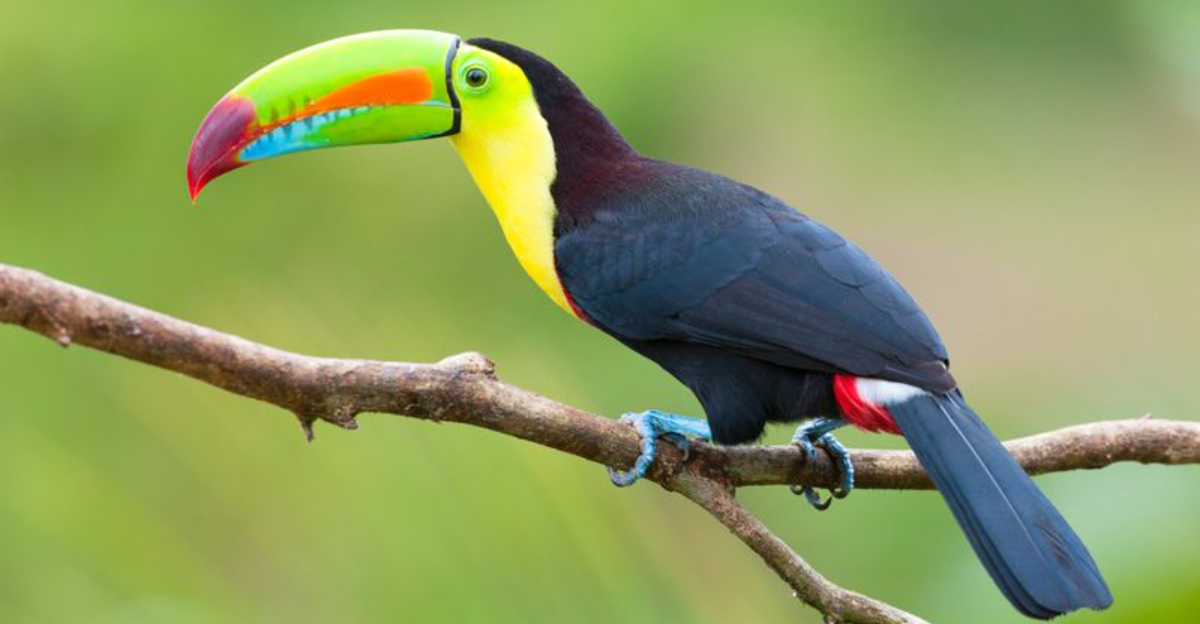
Our planet is home to a breathtaking array of colorful feathered creatures that dazzle with their unique patterns, vibrant hues, and elegant forms.
From rainforest canopies to Arctic tundras, beautiful birds have evolved extraordinary appearances that help them attract mates, camouflage from predators, or simply stand out in their environments.
Let’s explore twenty of the most visually stunning avian species that make birdwatchers and nature enthusiasts reach for their binoculars.
1. Resplendent Quetzal
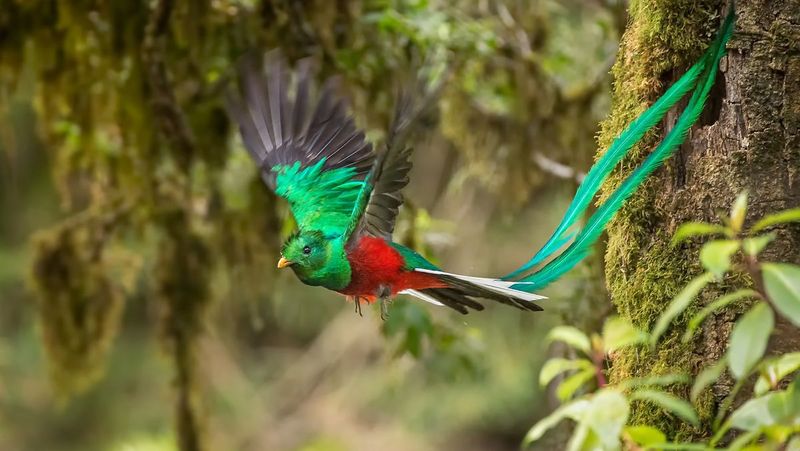
Like flying emeralds catching sunlight, these Central American treasures were once considered divine by ancient Mayans. Their tail feathers can grow up to three feet long, creating a shimmering green streamer as they fly.
Males display the most dramatic plumage, with metallic green bodies and crimson breasts that stand out against misty cloud forests. Sadly, habitat loss threatens these living jewels.
2. Mandarin Duck
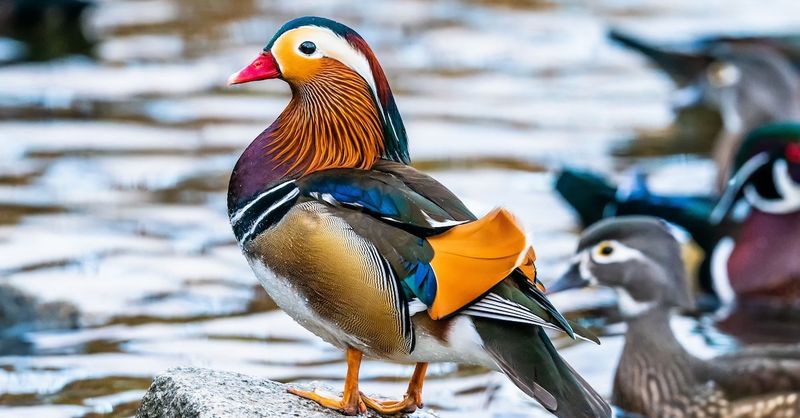
Imagine an artist went wild with a palette of orange, purple, blue, and white – that’s the male Mandarin duck. No wonder they’re considered the most photogenic waterfowl on Earth!
Native to East Asia, these small ducks sport sail-like back feathers and distinctive facial markings that look almost painted on. Unlike most ducks, they prefer perching in trees rather than paddling in open water.
3. Golden Pheasant
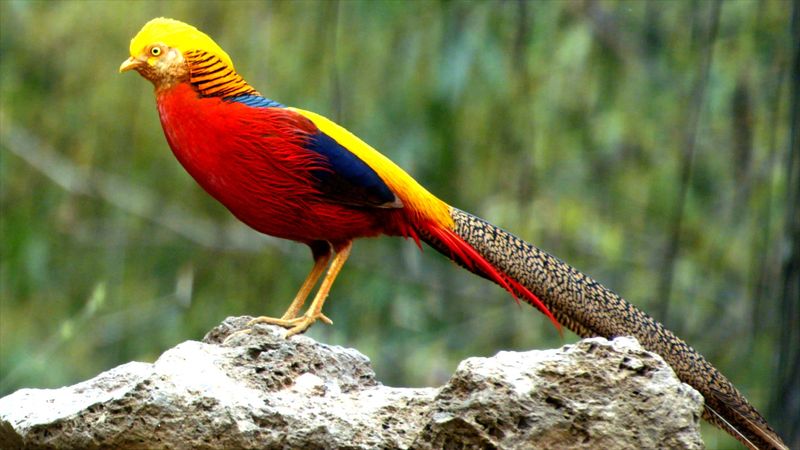
Strutting through Chinese forests comes a bird that seems dressed for royal court. Golden capes cascade down their necks, contrasting with crimson bodies and zebra-patterned wings.
Males sport a distinctive square-topped golden crest that bounces as they walk. Despite their flamboyant appearance, these shy birds are masters of disappearing into bamboo thickets when startled.
4. Lilac-Breasted Roller
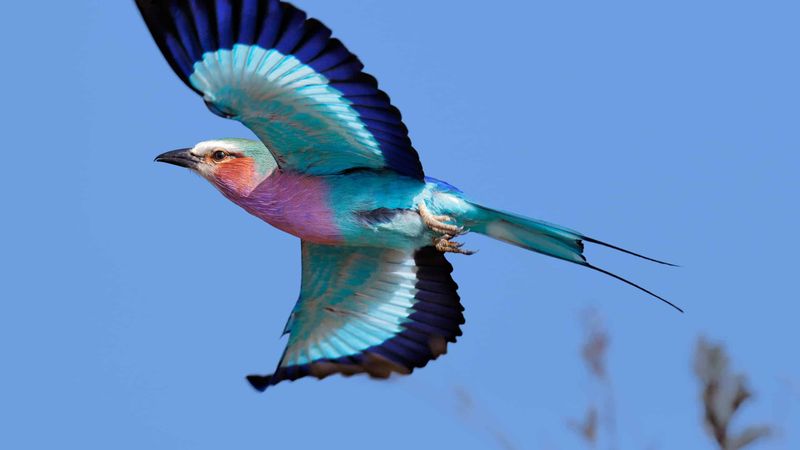
Splashed with colors that would make a sunset jealous, this African beauty sports a lilac throat, turquoise underparts, and chestnut back. The name “roller” comes from their acrobatic courtship displays.
Perched prominently on treetops across savannas, they swoop down to catch insects and small reptiles. Their aerial tumbling acts – rolling sideways and diving dramatically – make them favorites among safari photographers.
5. Painted Bunting
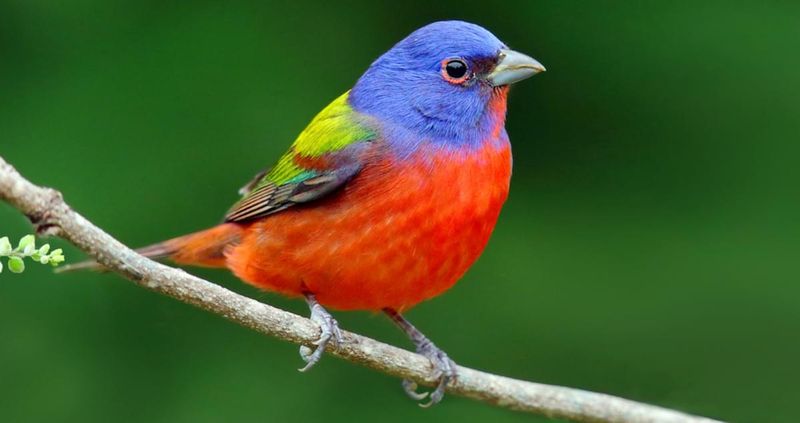
Nicknamed “nonpareil” meaning “without equal,” these North American songbirds look like they flew straight out of a child’s crayon box. Males flaunt a patchwork of indigo heads, scarlet underparts, and lime-green backs.
Female buntings opt for a modest yellow-green ensemble. Despite their rainbow appearance, they’re surprisingly elusive, preferring to hide in dense thickets. Their sweet melodies often reveal their presence before their colors do.
6. Wilson’s Bird-Of-Paradise
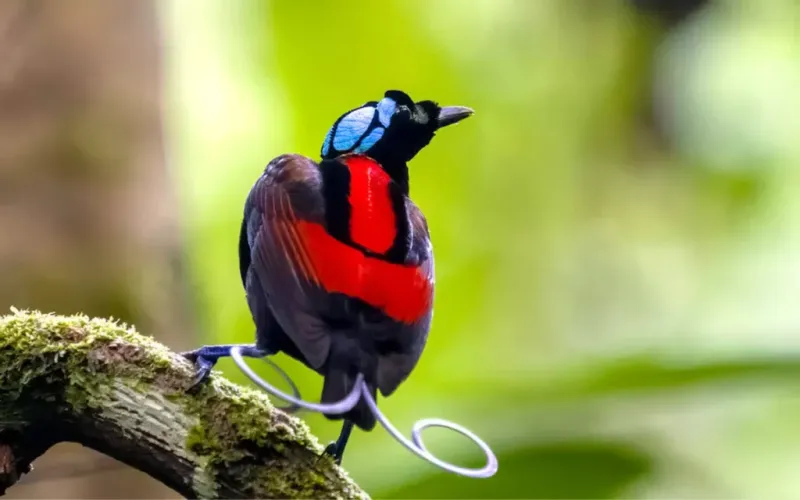
Found only on two tiny Indonesian islands, this rare jewel sports an electric blue skull cap that glows like neon against its crimson back. The curled tail feathers and yellow neck cape add to its otherworldly appearance.
Males clear a small performance stage on the forest floor, removing every leaf and twig. There they perform elaborate dances, transforming their shape with specialized feathers.
7. Atlantic Puffin
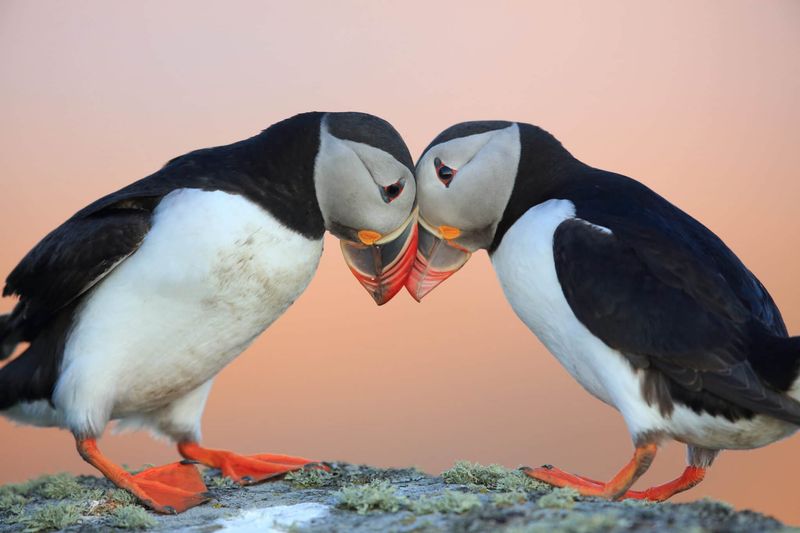
With their distinctive triangular beaks striped in carnival colors, these “sea clowns” bring comic relief to northern coastlines. During breeding season, their bills transform from dull gray to brilliant orange.
Surprisingly agile underwater, they can hold several fish crosswise in their beaks at once. Their stocky bodies and short wings make them awkward fliers but exceptional swimmers. Their clown-like appearance contrasts with their impressive survival skills in harsh North Atlantic waters.
8. Scarlet Macaw
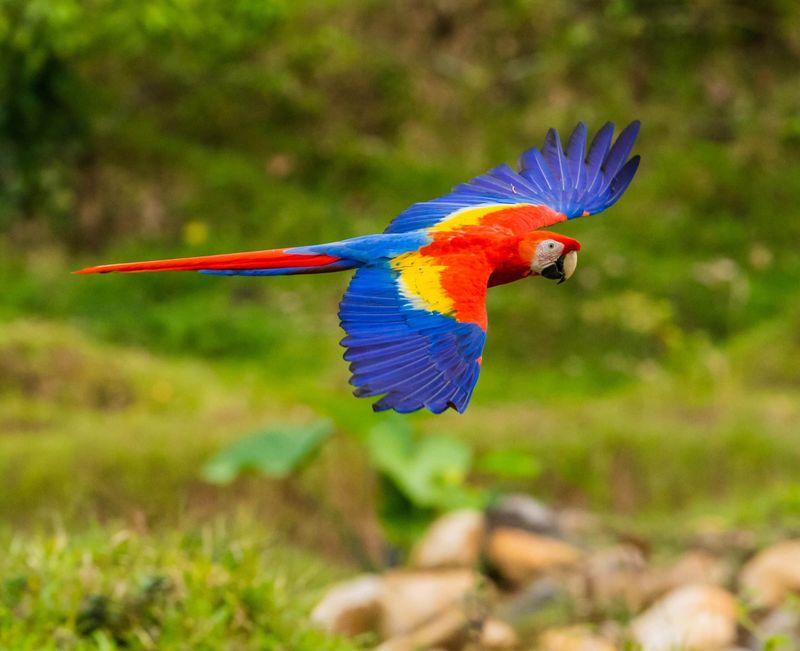
Flying rainbows of the Americas, these magnificent parrots flash crimson, yellow and blue plumage that can be spotted from extraordinary distances through dense jungle canopies.
Their powerful beaks crack open the toughest nuts and seeds with ease. Highly intelligent and social, they form lifelong pair bonds and can live over 75 years! Despite their flamboyant appearance, wild populations face serious threats from habitat loss and illegal pet trade.
9. Indian Peafowl
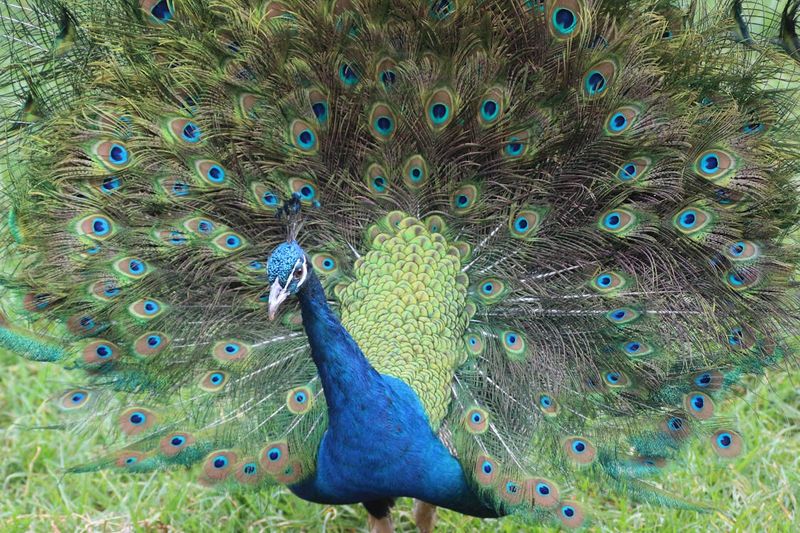
Walking gemstones that unfurl into living fans, peacocks have captivated human imagination for millennia. Each magnificent tail feather ends with an iridescent “eye” that shifts from copper to emerald depending on the light angle.
The resplendent train isn’t actually tail feathers but elongated upper tail coverts. Males shake these feathers to create a mesmerizing visual effect during courtship. Royal families worldwide have kept these birds for centuries as living garden ornaments.
10. Flamingo
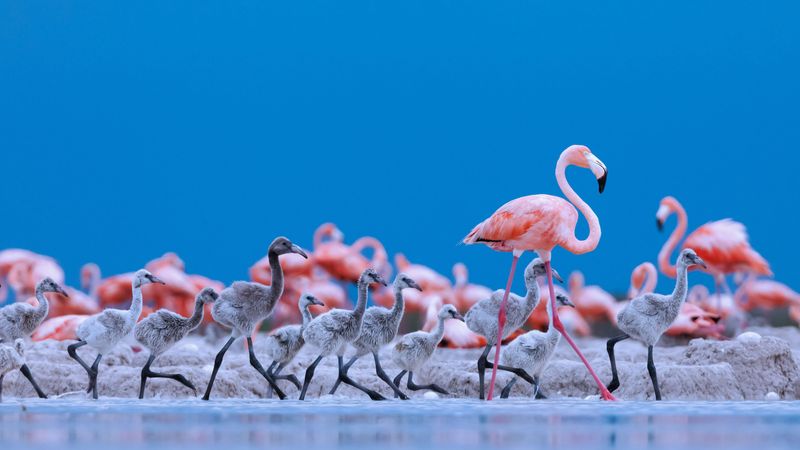
Standing on impossibly thin legs like living lawn ornaments, flamingos aren’t born pink – they earn their rosy hues from pigments in the tiny shrimp and algae they consume.
Their bizarre specialized bills work upside-down, filtering food from muddy water. Gathering by the thousands, they perform synchronized courtship dances that look like avian flash mobs. The more vibrant their color, the healthier their diet and more attractive they are to potential mates.
11. Blue Jay
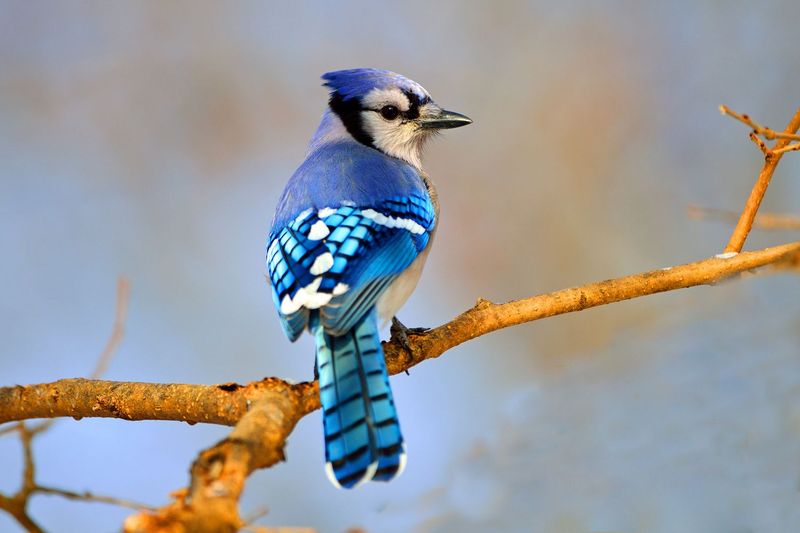
Dressed in crisp blue and white with a punky crest, these backyard beauties are nature’s neighborhood watchdogs. Their raucous calls alert the entire forest when predators approach.
Master mimics, they can imitate hawk calls to scare away competition at feeders. Their intelligence rivals that of crows and ravens. Few realize these bold birds secretly migrate by the thousands, flying at night when their blue colors are hidden from predators.
12. Victoria Crowned Pigeon
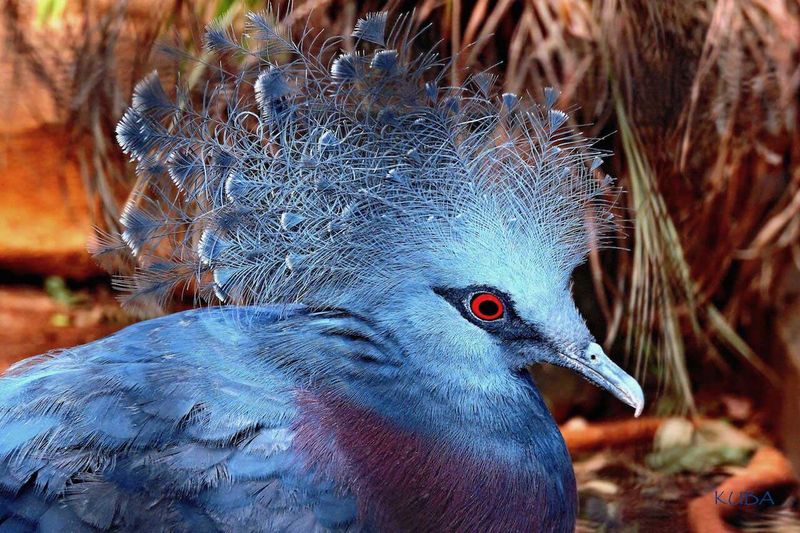
Forget everything you know about city pigeons – this royal giant from New Guinea sports a lace-like crest that resembles a Victorian fan. Standing nearly as tall as a bowling pin, it’s the largest pigeon in the world.
Their plumage showcases elegant shades of blue-gray with maroon chest feathers. They move with unexpected grace for their size, walking regally along the forest floor. Their deep, booming calls echo through rainforests like distant thunder.
13. Keel-Billed Toucan
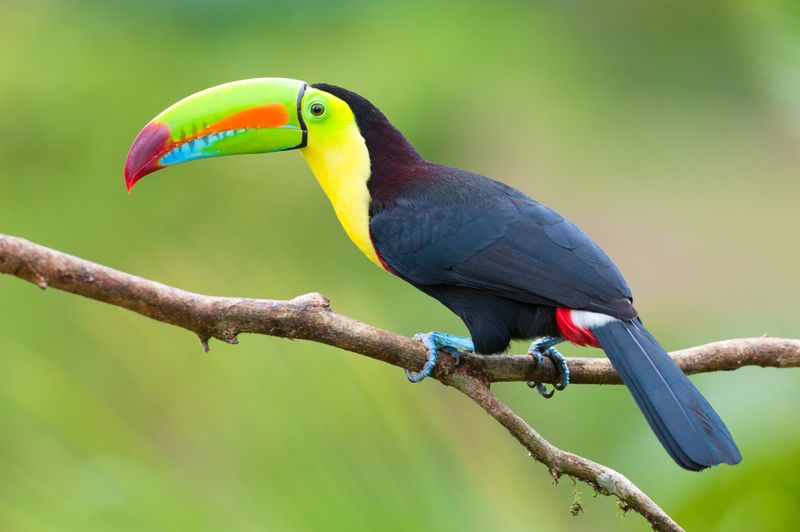
Few birds turn heads like the toucan, with a beak that looks straight out of a cartoon. Despite its size, the bill is light and functional, crafted from airy keratin structures.
Hopping between branches is preferred over flying, giving them a quirky charm in the treetops. By feasting on fruit, they scatter seeds and quietly nurture the rainforest’s future.
14. Long-Tailed Widowbird
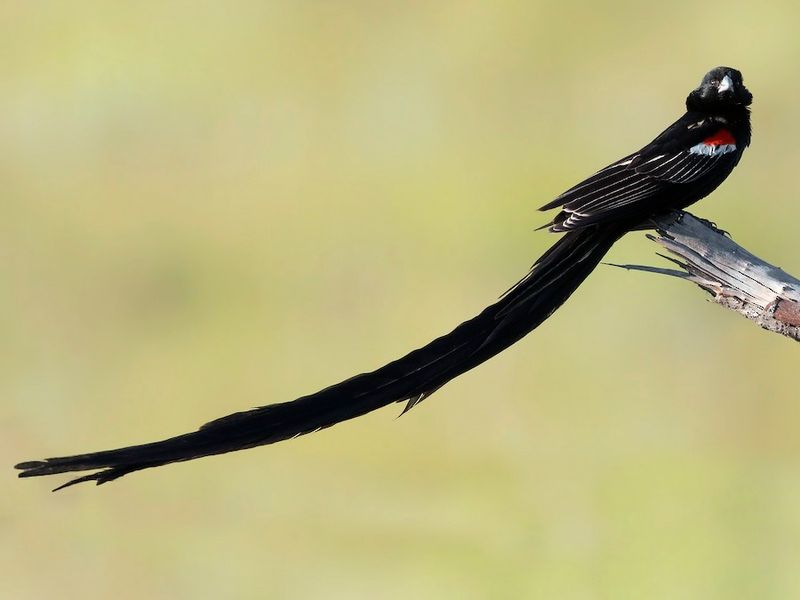
Imagine a bird whose tail is four times longer than its body! Male widowbirds grow extraordinary tail feathers that create a dramatic black comet streaking across African grasslands.
During breeding season, they perform laborious flight displays, struggling against the aerodynamic challenge of their extravagant tails. Females choose mates with the longest, most symmetric tails.
15. Hyacinth Macaw
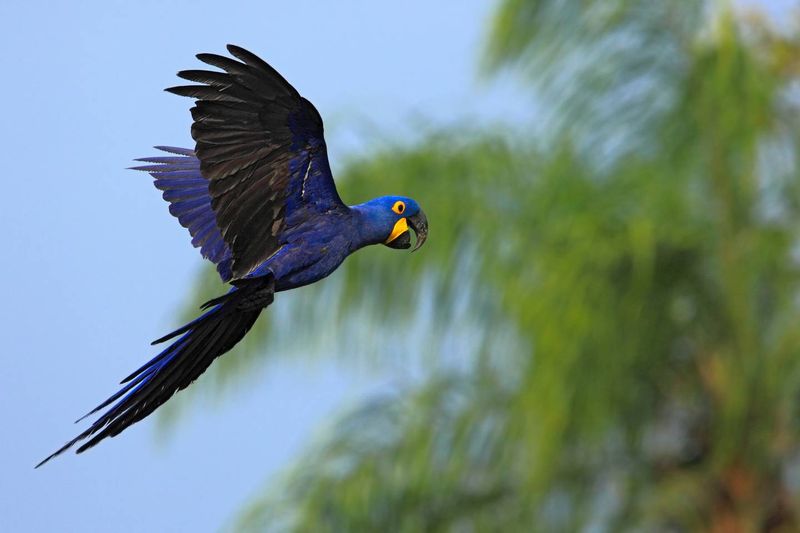
Draped in cobalt blue feathers that catch sunlight like polished sapphires, these gentle giants are the largest flying parrots in the world. Their massive beaks can crack palm nuts that would require a sledgehammer for humans to open.
Yellow eye rings and facial patches create a striking contrast against their blue plumage. Despite their intimidating size, they’re known as “gentle giants” with playful personalities.
16. Superb Bird-Of-Paradise
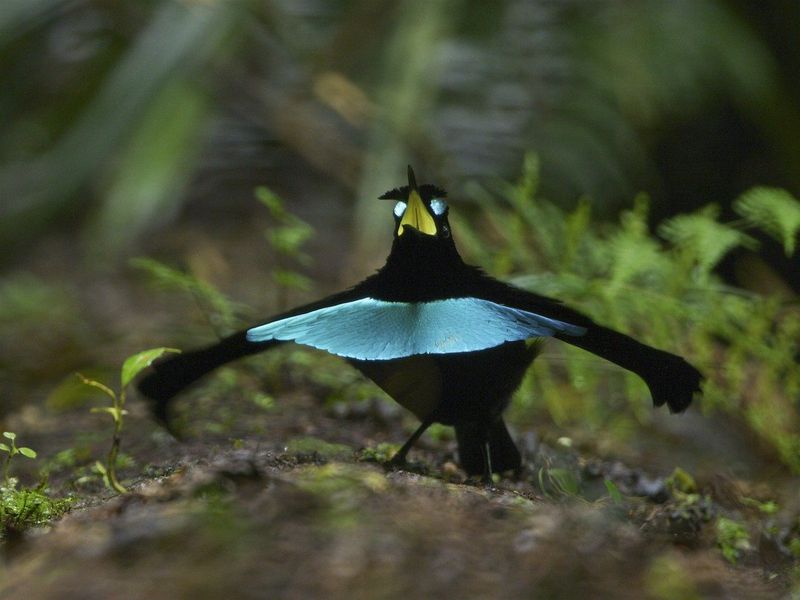
Courtship for the superb bird-of-paradise is anything but ordinary, featuring a transformation few creatures can match. Specialized feathers spread into a black oval with glowing blue accents, creating an illusion that stuns both mates and viewers.
Forest-floor stages are swept clean before the performance begins, ensuring no detail goes unnoticed. Rapid hops and rhythmic clicks complete a display that’s as hypnotic as it is otherworldly.
17. Rainbow Lorikeet
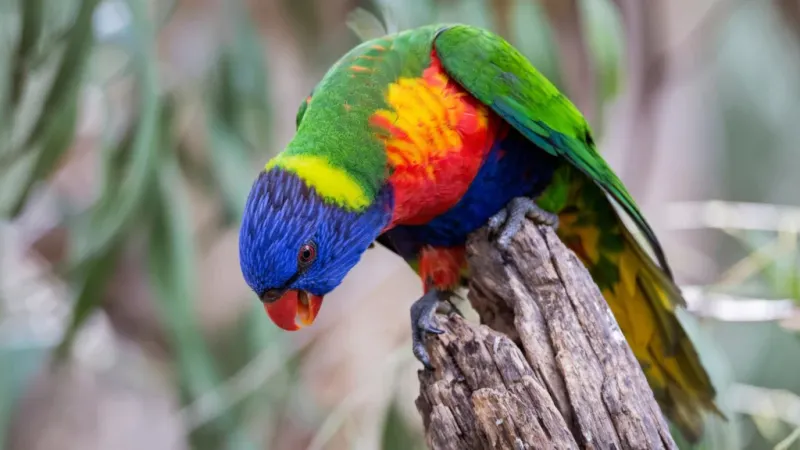
Wrapped in a technicolor dreamcoat of blue, green, yellow, and orange, these Australian parrots bring tropical flair wherever they gather. Their specialized brush-tipped tongues collect nectar and pollen from flowers.
Highly social, they form noisy, chattering flocks that bring both delight and occasional headaches to suburban neighborhoods. Unlike seed-eating parrots, their specialized diet of nectar makes them important pollinators.
18. Nicobar Pigeon
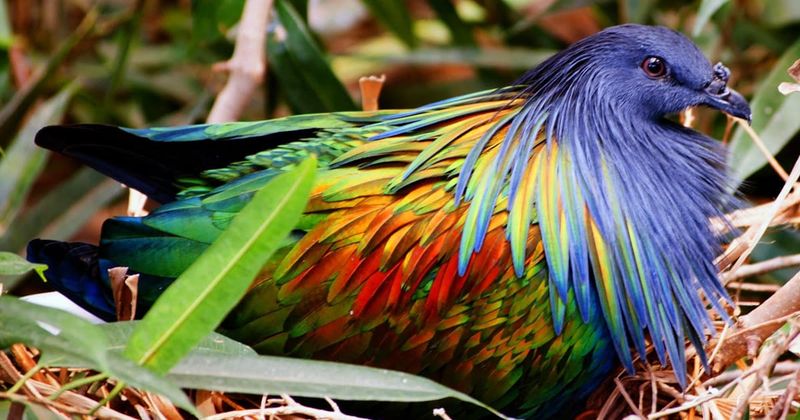
Cloaked in metallic feathers that ripple with iridescent greens, coppers, and purples, these birds look like they’re wearing liquid metal. Long, flowing hackle feathers cascade down their necks like ornate necklaces.
The closest living relative to the extinct dodo, they inhabit remote islands across Southeast Asia. Unlike their famous cousin, they’re excellent fliers, traveling between islands in search of food.
19. Gouldian Finch
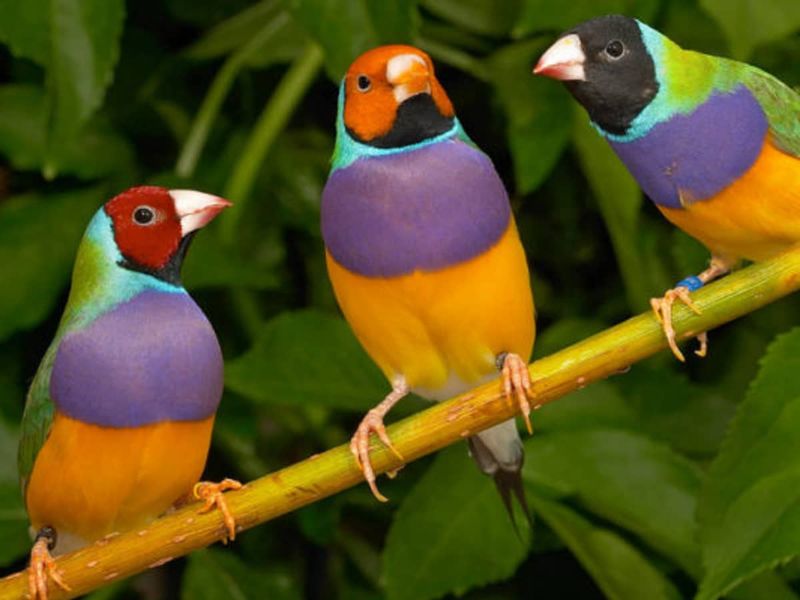
Painted with colors so vivid they almost look artificial, these tiny Australian finches come in multiple color variations – birds may sport black, red, or yellow faces with bodies in green, purple, and yellow.
Their rainbow appearance earned them the nickname “rainbow finches.” Unusually, they have different head colors within the same species. Once common across northern Australia, wild populations have declined dramatically, though they remain popular in aviculture for their unmatched palette of colors.
20. Tufted Puffin
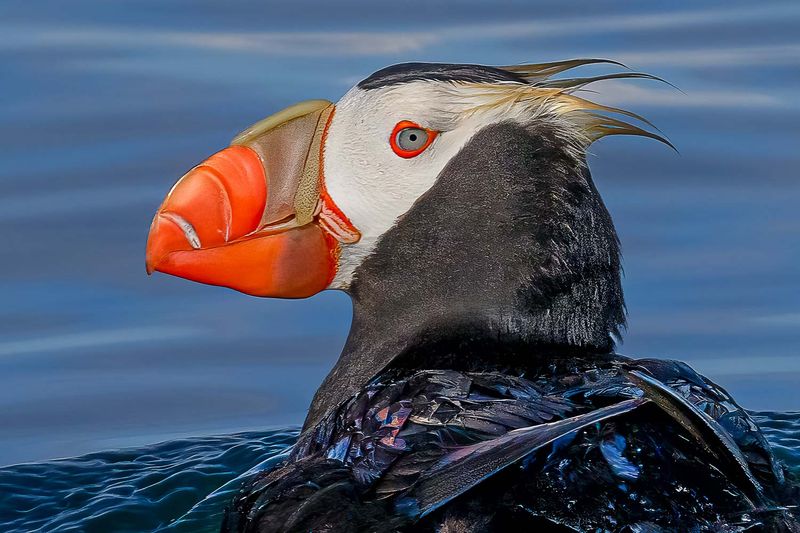
During breeding season, these seabirds transform from plain winter plumage to sporting golden head plumes that stream backward like a rockstar’s hair. Their massive triangular bills turn bright orange, completing the dramatic makeover.
Masters of multiple environments, they fly through air, swim underwater using their wings, and dig extensive burrows for nesting. A single bird can carry up to 20 small fish crosswise in its specialized beak at once!

